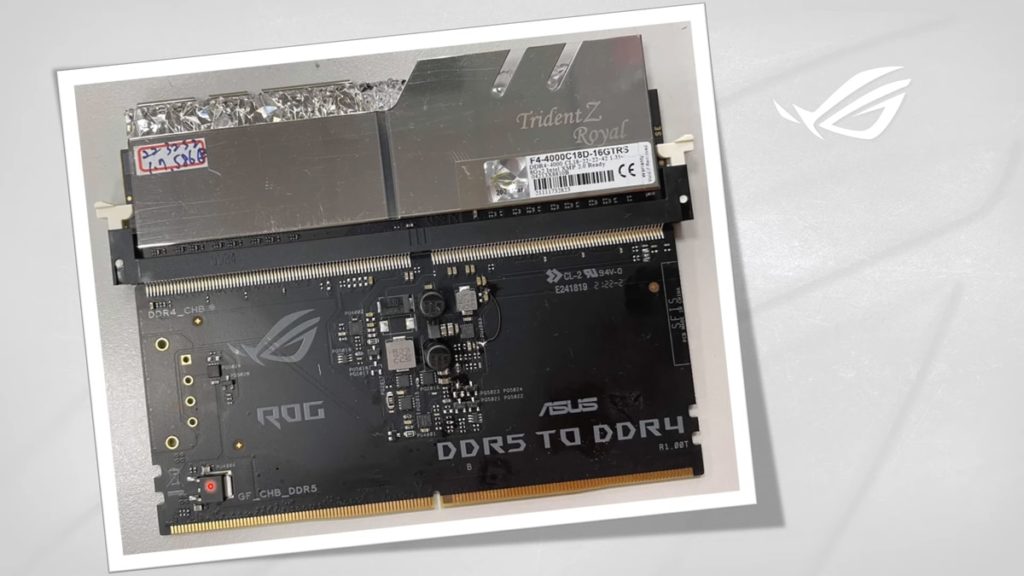Image: ASUS
ASUS has developed a converter card that allows DDR4 memory to be used on its DDR5 Z690 motherboards.
As demonstrated in a video shared by a YouTuber named Bing, which AnandTech believes to be an ASUS ROG employee, the card accomplishes this by using a special BIOS revision that allows the motherboard to run in DDR4 mode despite the substantial differences between the two generations of memory.
“The key issue is that DDR5 does power management per module, where DDR4 relies on power management on the motherboard, so that has to be taken into consideration,” the publication noted in its coverage. “Also, adding in a carrier card extends memory traces, which could degrade the quality of the signal.”
The converter card is confirmed to be working based on a portion of the video that shows a single DDR4 module in the converter card running at...
Continue reading...
